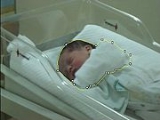
Livewire Segmentation Technique
Encyclopedia

Dijkstra's algorithm
Dijkstra's algorithm, conceived by Dutch computer scientist Edsger Dijkstra in 1956 and published in 1959, is a graph search algorithm that solves the single-source shortest path problem for a graph with nonnegative edge path costs, producing a shortest path tree...
, by Edsger W. Dijkstra. Firstly Convolve the image with a Sobel filter to extract edges. Each pixel of the resulting image is a vertex of the graph and has edges going to the 4 pixels around it, as up, down, left, right. The edge costs are defined based on a cost function.
Livewire Segmentation
The user sets the starting point clicking on an image’s pixel, known as an anchor. Then, as he starts to move the mouse over other points, the smallest cost path is drawn from the anchor to the pixel where the mouse is over, changing itself if the user moves the mouse. If he wants to choose the path that is being displayed, he simply clicks the image again.One can easily see in the right image, that the places where the user clicked to outline the desired region of interest are marked with a small square. It is also easy to see that the livewire has snapped on the image's borders.

